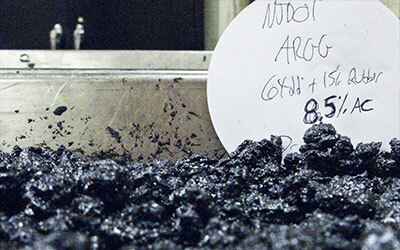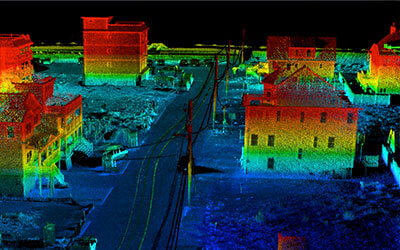CAIT focuses its multimodal infrastructure research, education, and tech transfer activities in 12 broad categories that improve preservation, life-cycle costs, resilience, and efficiency of U.S. transportation systems.
CAIT tackles the complex, interrelated issues of the country’s transportation infrastructure. A USDOT University Transportation Center (UTC) since 1998, CAIT was chosen in 2018 to lead the USDOT Region 2 UTC. This award helps the center and its consortium partners focus their engineering research capabilities and talents in areas that are specific to Region 2 and other high-volume, high-density, multimodal corridors.
Asset Management
Funding for repair and maintenance of U.S. road, rail, energy, and water systems consistently falls short of what is needed. Data-based frameworks to manage assets help agencies make tough choices about where, when, and how much to invest.
Condition Assessment
An accurate picture of infrastructure health is key for timely, economical preservation. New tools can quickly gauge overall or elemental condition, assess structural integrity, quantify deterioration, and detect small issues before they become big ones.
Congestion & Mobility
Congestion has consequences: lost productivity, poor air quality, structural degradation, stressed-out travelers, and more crashes. Solutions lie with faster, smarter tools and methods; cutting-edge data analysis; and fresh approaches.
Construction & Design
From the right asphalt mix design, to more accessible BIM systems incorporating 3D data, to QC methods during and after construction, ideas that help us build better and smarter often emerge from research.
Data & Modeling
Data is good—knowing how to use it is better. Solid data analysis can identify vulnerabilities in critical assets, calculate risks, battle congestion, uncover secrets of natural disasters, reveal patterns in bridge behavior, and much more.
Materials & Durability
It is essential for infrastructure to be stronger and last longer. Innovative materials and rehabilitation methods that are more durable, perform better, and reduce costs can extend the life of these assets well into the 21st century.
Risk & Resilience
How we build and protect infrastructure needs to evolve with a changing world. Dense built environments make multiple critical systems vulnerable to severe weather and other disasters. We must understand risks, anticipate major events, and prepare to recover.
Safety
Good planning, smart engineering, crash reduction strategies, and awareness all increase safety. State and local agencies working to saves lives need the right tools, knowledge-sharing forums, training, and professional technical support.
Smart/Connected Transportation
Vehicle-to-vehicle and vehicle-to-infrastructure connection are the future of all transportation. Research will provide answers for how planes, trains, and motor vehicles communicate with each other and their environment safely and reliably.
Sustainability & Environment
Can we optimize energy consumption? How will we fuel our vehicles, homes, and businesses as future demand for power rises? Motivation and force of will can lead to practical, clean, efficient, and sustainable energy sources and systems.
Technology & Tools
Research has to quickly translate into practical solutions to real-world problems and hit the streets, stat! CAIT is acting with urgency to create technologies and products that help meet challenges faced by transportation practitioners every day.
Workforce Development
CAIT trains today’s workforce and prepares tomorrow’s professionals. Inspiring students through hands-on experience and keeping thousands of workers up-to-date via hundreds of courses ensures a steady stream of transportation talent.
Facilities & Equipment
CAIT’s building on Rutgers–New Brunswick Busch campus contains a fully appointed 106-seat auditorium; a training classroom with 24 workstations; research and support offices for staff, administrators, and faculty working on CAIT research projects; a small library; and meeting spaces—16,000 square feet in total.
CAIT also has specialized labs for asset management; product development; a 14,000-square-foot AASHTO-accredited asphalt pavement lab, and the world’s first accelerated testing facility for full-scale bridge systems, and a number of other technology firsts.






